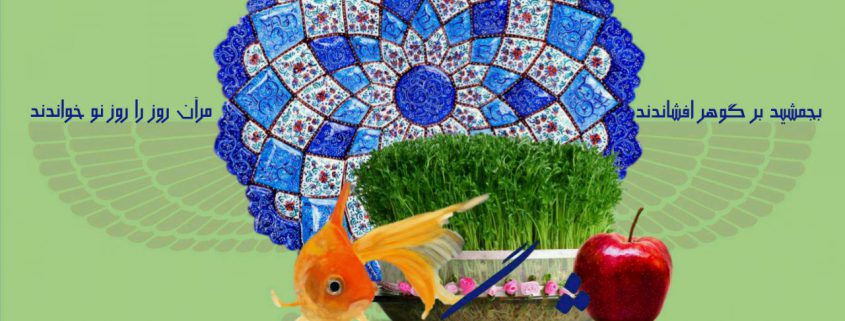
To pay with our secure credit card process, please visit www.shabahang.org
To pay by check, please make checks payable to Shabahang and mail to:
Shabahang, PO Box 148, Gladwyne, PA 19035 by March 14.
The program will include: Special entertainment for the children, Hors d’oeuvre, Sit-down dinner with Persian & American cuisine, Music and Dance with DJ Beshkan
For discounted hotel prices at Marriott Courthouse, please indicate “Shabahang”
E-mail contact: Contact@Shabahang.org
The Iranian New year celebration, or Nowruz, begins at the first day of spring, usually close to March 20th of the Gregorian calendar; aka the start of Aries. With roots going back at least 3 millennia, Nowruz ceremonies are symbolic representations of rebirth. According to Iranian mythology, Nowruz was established by King Jamshid after the nation survived a very tough winter. Nowruz brings hope, peace and prosperity to the world. It is celebrated by Iranian people and their cultural neighbors regardless of ethnicity, political views or religion from western China to the eastern Mediterranean.
Here are the commonly used items and underlying meanings.
- Sabzeh: sprouts, usually wheat or lentil representing rebirth and green nature.
- Sonbol: hyacinth plant, represents growth and life.
- Samanu: a pudding prepared from germinated wheat sprouts, the symbol of sophisticated cooking and affluence.
- Senjed: the sweet, dry fruit of the Oleaster tree – also called Russian or Persian Olive – represents resilience, hardiness.
- Seer: garlic, the symbol for health.
- Somaq: sumac berries, represents the color of sunrise; with the appearance of the sun Good conquers Evil.
- Serkeh: vinegar and represents age and patience.

